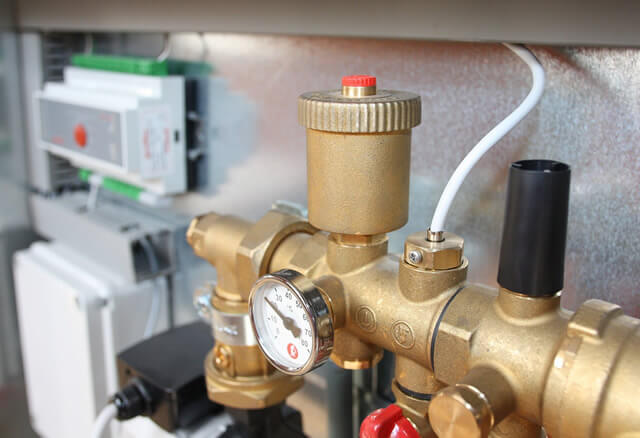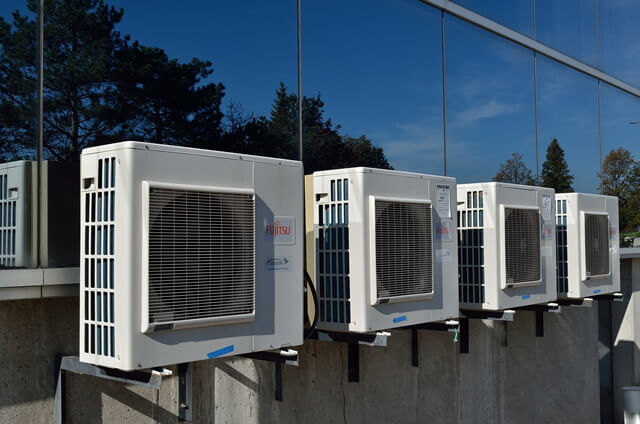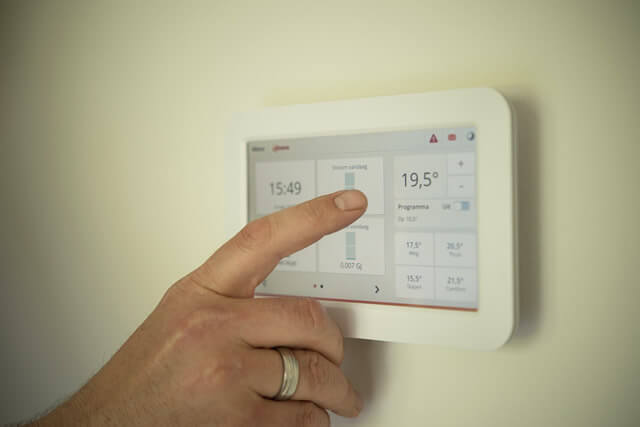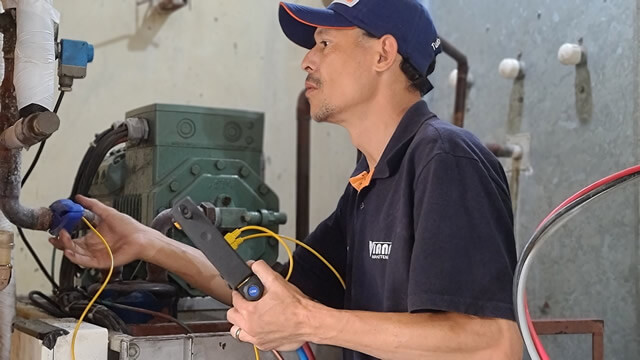HVAC Energy Saving Products

In today’s energy-conscious world, it is crucial to optimize HVAC systems for efficiency and cost savings. Lexus Engineering can help you discover the benefits of energy-saving products and explore different types available. Lexus Engineering will work with you to choose the right products by considering factors like compatibility, energy efficiency ratings, and cost-effectiveness. Learn about installation, maintenance, and troubleshooting to ensure optimal performance. Lexus Engineering can make your HVAC system eco-friendly and wallet-friendly!
Types of Energy Saving Products for HVAC
Exhaust Air Heat Recovery
Exhaust air heat recovery systems transfer heat energy from the exhaust air to the supply air stream, helping reduce the energy consumption for heating or cooling. There are three main types of exhaust air heat recovery systems: rotary, plate, and run-around coils/ heat pipes. Rotary systems transfer sensible and latent heat through a specially designed exchanger design. Plate systems use a fixed heat exchanger that transfers heat by conduction. Run-around coils and heat pipes use a fluid loop that circulates between two coils, transferring heat by conduction, convection, and phase change. Exhaust air heat recovery systems can also be classified as recuperative or regenerative, depending on whether they transfer only sensible heat or both sensible and latent heat. Click here to learn more about the difference between heat recovery and energy recovery.
Energy-Efficient HVAC Units
Heating, ventilation and air conditioning or HVAC is a system that provides comfort and indoor air quality for residential and commercial buildings. Several types of HVAC units vary in their efficiency, cost and suitability for different climates and spaces. Some of the most common types are:
- Heat pumps: Transfer heat from one place to another using a refrigerant cycle. They can provide both heating and cooling by reversing the direction of the cycle. Heat pumps can be air-source or geothermal, depending on whether they use the outside air or the ground as the heat source or sink. Heat pumps are very efficient, especially in mild climates, but they may require a backup heating system in colder regions. The efficiency of heat pumps is measured by HSPF (heating season performance factor) for heating mode and SEER (seasonal energy efficiency ratio) for cooling mode.
- Furnaces: These are systems that burn fuel (such as natural gas, oil, or electricity) to produce heat. The heat is then distributed through ducts and vents to the rooms. Furnaces are widely used in colder climates, but they can be less efficient than heat pumps, especially if they are older models. The efficiency of furnaces is measured by AFUE (annual fuel utilization efficiency), which is the percentage of energy that is converted into heat.
- Air conditioners: Cool the air by removing heat and moisture from it. The cooled air is then circulated through ducts and vents to the rooms. Air conditioners can be split or packaged, depending on whether they have separate indoor and outdoor units or a single unit that contains both components. Air conditioners are essential for hot and humid climates, but they can consume a lot of energy. The efficiency of air conditioners is also measured by SEER.
- Other types: Other types of HVAC units can suit specific needs and preferences, such as variable air volume (VAV), variable refrigerant volume (VRV), fan coil units (FCU) and split cassettes. These systems can offer more flexibility, control and customization for different zones and spaces, but they may also have higher installation and maintenance costs.

Modern HVAC units are designed with advanced technologies that maximize energy efficiency without compromising performance.
Smart Ventilation Systems
Smart ventilation systems are systems which adjust the ventilation rate in a building according to the indoor air quality, energy consumption, and other factors. Smart ventilation systems can provide benefits such as improved comfort, health, and energy efficiency. Smart ventilation systems work with different types of heating and cooling systems, such as central systems, mini splits, window ACs, and more. Smart ventilation systems can be controlled remotely through smart devices or wireless thermostats. Smart ventilation systems are becoming more popular in both residential and commercial buildings as a way to optimize the indoor environment.

What to Consider When Choosing Energy Saving Products
Compatibility with Existing HVAC Systems
Ensure energy saving products integrate seamlessly with your current HVAC system to achieve optimal performance.
Energy Efficiency Ratings
Choose products with high energy efficiency ratings like ENERGY STAR certification to ensure maximum energy savings.
Cost-Effectiveness and Return on Investment
Assess the upfront cost and overall long-term savings potential to determine the most cost-effective energy saving solution.
Installation and Maintenance of Energy Saving Products
Professional Installation vs. DIY
Some energy saving products will require professional installation to ensure proper functionality, others can be installed as DIY projects.
Regular Maintenance and Inspection
Scheduling routine maintenance and inspections helps keep energy saving products in top condition, maximizing their efficiency and longevity.
Troubleshooting Common Issues
Learning how to identify and resolve common issues that may arise with energy saving products ensures they continually perform at their best.

Achieving Energy Efficiency in HVAC Systems
To achieve energy efficiency in commercial HVAC systems, one should consider the following steps:
- Improving building envelope insulation and sealing the exterior building envelope reducing infiltration of unconditioned air can limit heat loss from the building.
- Adjust the thermostat settings according to the occupancy and weather conditions to avoid simultaneous use of heating and cooling.
- Perform regular maintenance and replace old or inefficient equipment with ENERGY STAR certified models.
- Harness renewable energy sources and reduce fossil fuel consumption with heat pumps and solar heating.
- Reducing the cooling or heating load and taking advantage of natural conditions can be achieved by using demand-controlled ventilation and economizers.
- Use variable speed drives, temperature resets, and zone controls to optimize heating circuits.
- Use programmable controls and sensors to implement energy-saving strategies. Optimal start/stop, night setback and setup, night purge, morning warm-up, etc. are a few examples of the tools available.
- Circulate air and improve comfort levels with fans.
- Installing humidifiers in your HVAC equipment will increase comfort levels and lower heating energy.
